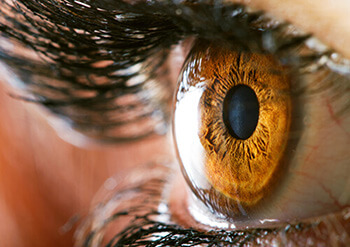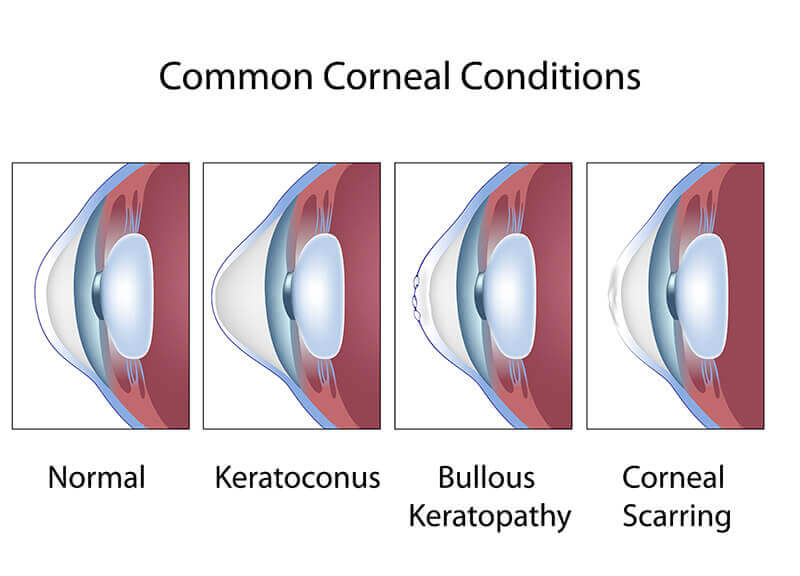
The surface of the cornea is where light begins its journey into the eye. The cornea’s mission is to gather and focus visual images. Because it is out front, like the windshield of an automobile, it is subject to considerable abuse from the outside world. Particles of dust and grit inevitably find their way onto our outer eyes and irritate them, thereby stimulating the production of tears to wash foreign material away.
The cornea is masterfully engineered so that only the most expensive manmade lenses can match its precision. The smoothness and shape of the cornea is as vitally important to its proper functioning as is its transparency. If either the surface smoothness or the clarity of the cornea suffers, vision will become distorted. Although appearing to be one clear membrane, the cornea is actually composed of five distinct layers of tissue, each with its own function. The thin outer layer, or epithelium, is a reliable barrier against corneal infection. It usually must be damaged before an infectious agent can get a start in the middle layer (stroma) of the cornea. This middle layer is made of collagen, a connective tissue.

We can tolerate very large scars on our bodies with no concern except for our vanity. Not true on the cornea! Even a minor scar can impair one’s vision. No matter how well the rest of the eye is functioning, if the cornea is scarred, clouded or distorted, vision will be affected.
